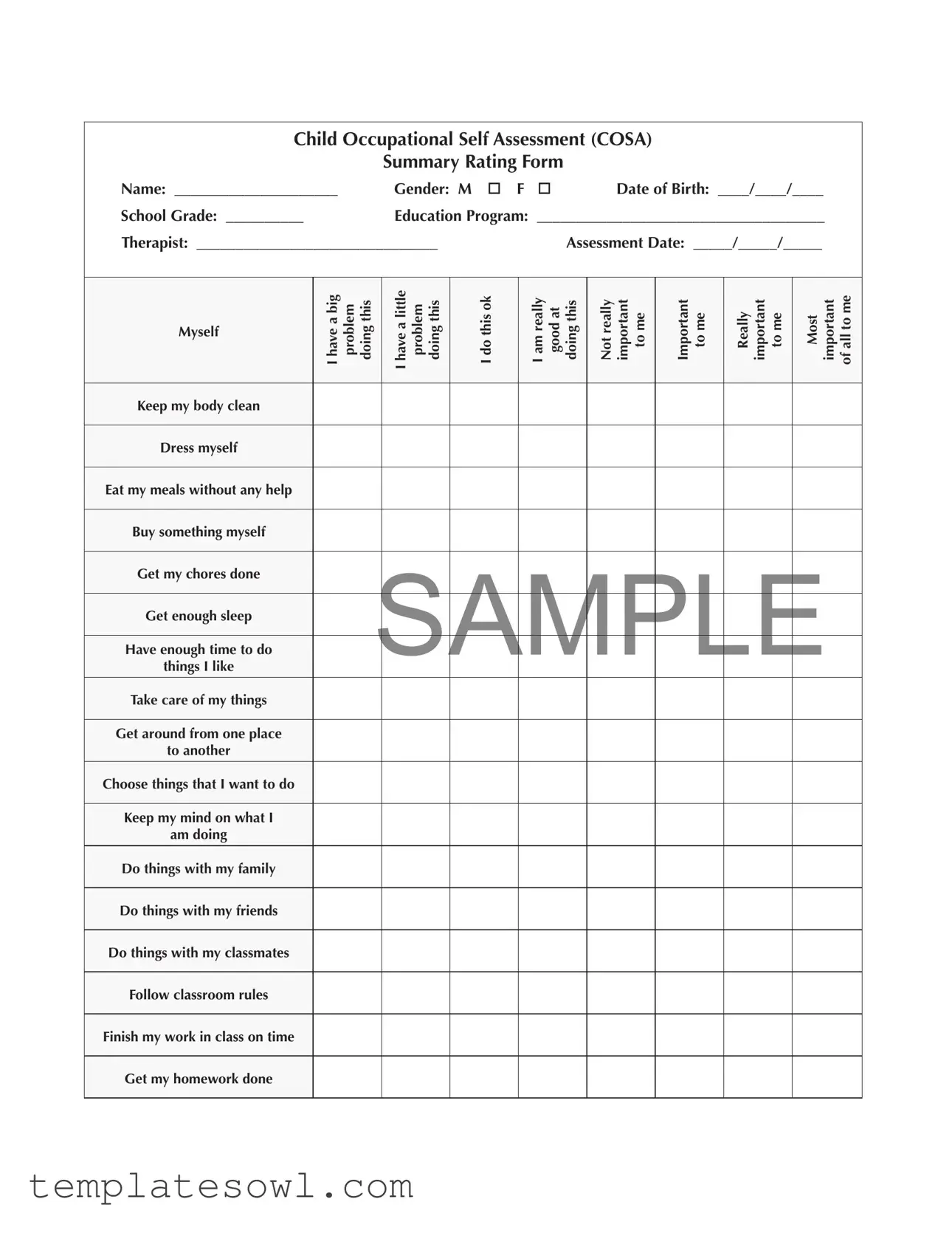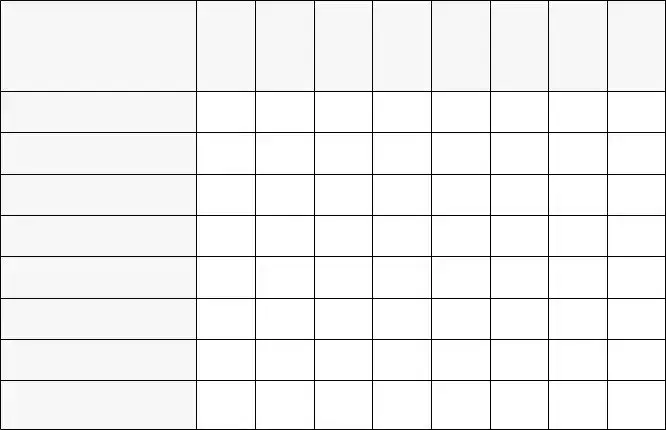What is the purpose of the Child Occupational Self Assessment (COSA)?
The COSA is designed to help children express their own views about their abilities and challenges in everyday activities. It recognizes that children are the best experts on their own experiences. By allowing them to identify what they feel they do well and where they struggle, caregivers and therapists can better support their growth and development.
How should I help my child fill out the COSA?
To assist your child, create a comfortable and relaxed environment. Encourage them to think about daily activities, such as self-care, schoolwork, and social interactions. Go through each question together but let them provide their own answers based on how they truly feel. It’s important that they understand there are no wrong answers and that honesty is key.
What types of activities are covered in the COSA?
The COSA focuses on various activities that children might encounter in their daily lives. This includes personal care tasks, school responsibilities, social interactions, and leisure activities. Questions are framed to assess how confident they feel about their abilities concerning these tasks, allowing for a comprehensive view of their occupational performance.
What are the benefits of conducting a COSA?
Completing the COSA can help identify strengths and areas where the child may need more support. It encourages self-reflection and can improve confidence. For caregivers and therapists, this assessment offers valuable insights into the child’s perspective, guiding interventions and support strategies tailored to their needs.
How often should a COSA be completed?
It's recommended to complete the COSA periodically, especially if there have been significant changes in the child's life or developmental milestones. Regular assessments allow tracking of progress over time and can highlight improvements or persistent challenges, facilitating timely interventions when necessary.
How can I use the results of the COSA?
The results of the COSA can be used to inform discussions with teachers, therapists, and any other professionals involved in your child’s care. They provide a starting point for setting goals and developing an individualized support plan. Use the information to focus on skills that can be developed further, enhancing your child's overall quality of life.


